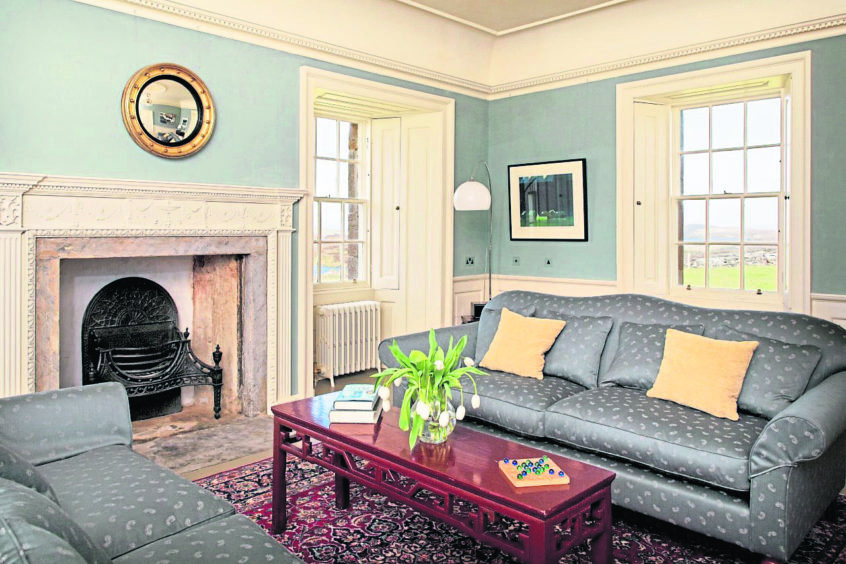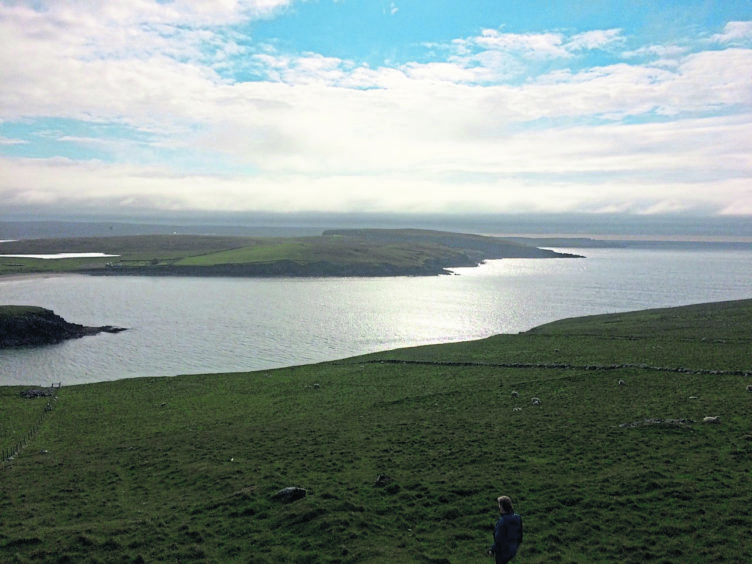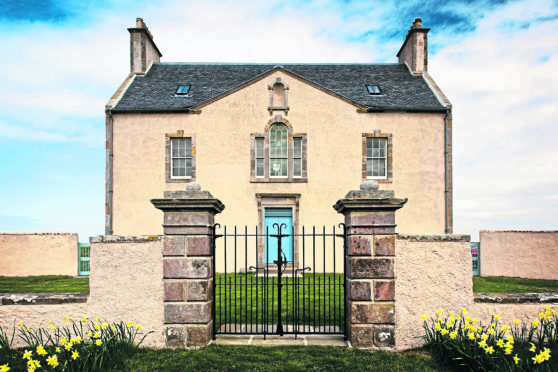As someone drawn to remote outposts, and with a thing about Vikings, I didn’t take a lot of persuading to visit Unst, the most northerly isle in the Shetland Isles – and hence the most northerly part of the UK.
Certainly not when given the opportunity of spending a couple of nights at Belmont House, a category A-listed classical Georgian house built in 1775.
After years of neglect, the house was close to ruin when a group of Shetland residents, realising its unique status and concerned at its continuing deterioration, acquired it from its Edinburgh owner and contemplated the enormous task of saving it.
That was 23 years ago, since when the house has been meticulously restored by the Belmont Trust at a cost of £1.2 million, with nearly all the work carried out by local craftsmen.
I am happy to report that the effort was worth every penny and every nail.
After a day of walking round the island in what can be kindly termed Atlantic weather, there really is no better place to be than in the Belmont’s grand but homely décor, looking out across the sound to the neighbouring island of Yell, amid the bleating of the newborn lambs which roam freely on the grounds.
Stress has become an all-pervasive part of modern life, and it was noticeable how much more relaxed I felt after just two days on the island.
It is Unst’s very remoteness – two hours and two ferries to the nearest Tesco in Lerwick – which is such a large part of its appeal.
 Indeed, as soon as I stepped off the boat which took me from Aberdeen to Lerwick, I was aware I had only one foot in Scotland, as the locals referred to the Scottish mainland as “Scotland”, as if it was another country.
Indeed, as soon as I stepped off the boat which took me from Aberdeen to Lerwick, I was aware I had only one foot in Scotland, as the locals referred to the Scottish mainland as “Scotland”, as if it was another country.
When I asked one of the Belmont House trustees whether she considered herself Scottish, she thought about it for a moment and replied: “Well…administratively I’m Scottish…I suppose.”
We discussed the issue for a while, and she told me that when new government tourist signs, featuring the Scottish thistle, were erected at various points across Unst, somebody took issue with the inference and spray-painted over the thistle.
Shetlanders are a breed apart and proud of their otherness.
But within Shetland, Unst can make Lerwick seem positively metropolitan.
There is an “edge of the world” feel about the island.
The beaches are as stunning and atmospheric as you might expect.
Norwick beach is in fact a site of great geological significance – what appears to be a group of jagged rocks protruding from the sand is in actual fact the point where the continental and oceanic plates met 420 million years ago.
Skaw beach is the UK’s most northerly beach and also well worth a visit.
Indeed, Unst is home to a plethora of “most northerly” must-sees (including the UK’s most northerly house, church and post office), all good material for future pub conversations.
Another is the Shetland Reel gin distillery at Saxa Vord, the UK’s most northerly distillery.
 Established in 2014, bottles of Shetland Reel gin are now shipped all over the world, including limited edition Wild Fire gin, launched by Ann Cleeves herself to mark the publication of the book of the same name, in her bestselling Shetland series.
Established in 2014, bottles of Shetland Reel gin are now shipped all over the world, including limited edition Wild Fire gin, launched by Ann Cleeves herself to mark the publication of the book of the same name, in her bestselling Shetland series.
And the Valhalla Brewery across the road enjoys the distinction of being the UK’s most northerly brewery.
Back to the Vikings, and a little-known fact which I only learned upon visiting myself: Unst is home to the highest density of Viking remains in northern Europe, with 60 identified sites on the island, and almost certainly more as yet undiscovered.
Although the reconstructions, such as a longship and longhouse at Haroldswick, are impressive enough, the real remains – which can be found dotted all over the island – are fascinating.
As I stood amid the remains of an 11th Century Viking longhouse at Underhoull, and looked out across Lunda Wick bay, I could very well imagine the sight of our bearded forefathers coming ashore, with their axes and swords, oilskins and horned helmets.
Unst is rich in history, and not just of the Viking variety.
At Uyea Sound I roamed among the ruins of Muness Castle, built in 1598 – another “most northerly” as the UK’s northernmost castle.
And the Unst Boat Haven Museum at Haroldswick tells the story of the island’s fishing industry through the years, and houses more than 20 old wooden boats.
Historically, Unst also had a large RAF presence, and though the Saxa Vord radar station closed in 2006, the island played an important role in military history, including the clandestine Shetland Bus operation which transported agents and refugees between Shetland and occupied Norway.
And if after all that you have time in Lerwick while waiting for the boat home, I can highly recommend the Shetland Museum and Archives where you can further explore Shetland’s rich heritage and culture in a thoroughly modern setting.
